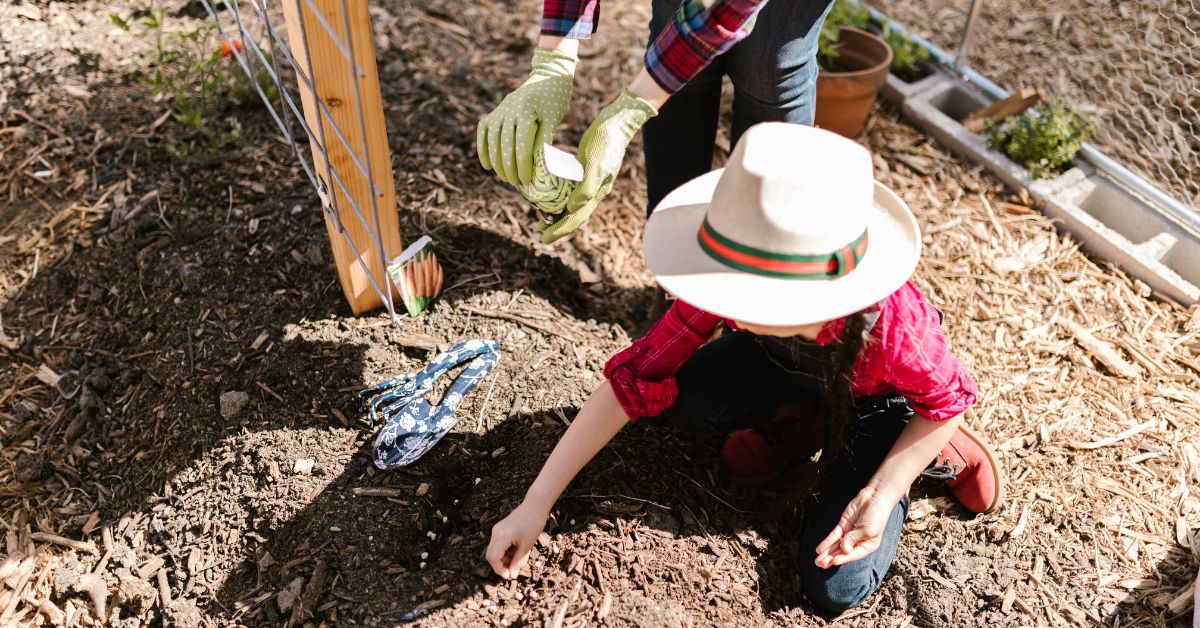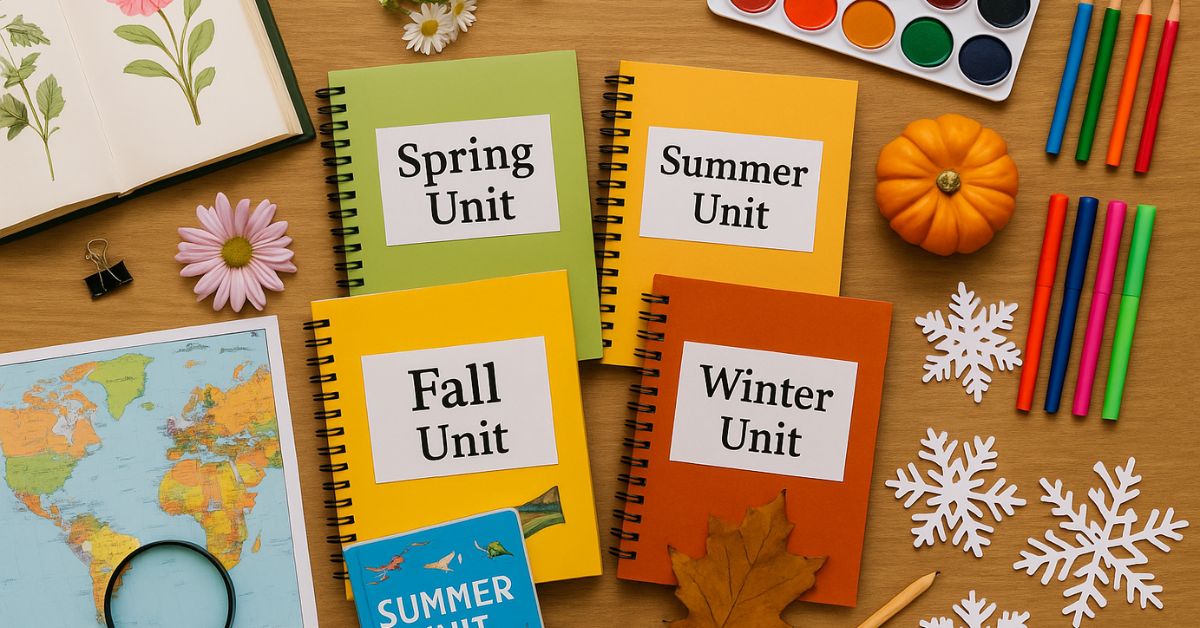Homeschooling offers parents the flexibility to tailor education to their children’s needs and interests. One of the most engaging ways to keep learning exciting throughout the year is by incorporating seasonal learning activities. These activities bring lessons to life by connecting them to the changes happening in the world around us. Seasonal homeschool unit studies and year-round themed lessons are not only fun but also meaningful, as they ground learning in nature, history, and culture.
Below, we’ll explore how to approach unit studies by season and offer practical ideas to inspire year-round education.
Why Seasonal Learning Works
Unit studies are a method of teaching that integrates several subjects under one theme, making learning cohesive and immersive. When these studies are linked to seasons, they become even more engaging. Children often relate more easily to lessons when they see the relevance to their everyday life—like exploring botany during a springtime nature walk or studying astronomy on a clear, chilly winter night.
The seasonal approach also supports awareness of natural cycles, cultural traditions, and local events, fostering a connection to the world. It moves learning beyond textbooks, encouraging hands-on activities, research, and discovery.
Ideas for Spring Unit Studies
Spring is a time of growth and renewal, offering countless opportunities for interactive projects and exploration. Here are some themes you can use for spring:
- Gardening and Botany
-
- Study plant life cycles by growing flowers, vegetables, or herbs.
-
- Learn about pollinators like bees and butterflies and create habitats for them.
-
- Explore types of seeds and test germination rates with a simple experiment.
- Weather and Atmosphere
-
- Chart rainfall patterns and discuss the water cycle.
-
- Study cloud formations and learn basic meteorology.
-
- Create a DIY barometer to track atmospheric pressure.
- Spring Holidays Around the World
-
- Explore traditions like Easter, Holi, or Earth Day celebrations.
-
- Incorporate geography by identifying countries where these festivities originate.
-
- Create arts and crafts inspired by cultural symbols or traditions.

Summer-Themed Learning
With longer days and warmer weather, summer offers plenty of outdoor learning opportunities. Consider these topics for your summer unit studies:
- Oceanography and Marine Life
-
- Study the layers of the ocean and the animals that live in each zone.
-
- Take a field trip to a local aquarium or beach and investigate tide pools.
-
- Create an ocean diorama or write reports on favorite sea creatures.
- Astronomy and Stargazing
-
- Teach constellations and how they change with the seasons.
-
- Discuss the phases of the moon and encourage nightly observations.
-
- Read stories from cultures about the stars and their myths.
- Local History and Geography
- Research the history of your hometown or region.
-
- Visit historical landmarks, parks, or museums.
-
- Create a scrapbook or presentation about what your family discovers.
Summer is also an excellent time for lightweight learning that incorporates travel or vacation themes, making education a seamless part of your adventures.
Fall Learning Themes
Fall is often seen as a fresh start for homeschooling families, coinciding with the beginning of a new school year. It’s a season rich with themes that bridge hands-on activities and in-depth academic content.
One popular fall study topic is harvest and agriculture. Lessons can include learning about crops, studying the parts of a plant, or visiting a local farm. Cooking seasonal recipes like pumpkin muffins can fold in math and science through measurements and chemical reactions.
Tying lessons to fall holidays can also have a broad appeal. For instance, a unit on Thanksgiving can cover topics such as U.S. colonial history, geography (mapping the Mayflower’s route), and Indigenous cultures. Another festive angle might focus on how different cultures celebrate fall and harvests, such as the Chinese Mid-Autumn Festival.
Fall’s cooler weather also makes it ideal for cozy indoor projects. You might explore literature and storytelling, reading autumn-themed books and encouraging kids to write their own short stories about changing leaves or the brisk fall air.
Winter Unit Study Inspirations
Winter brings unique experiences and plenty of indoor activities to complement colder weather. This is a perfect time to center your studies on traditions, science, and art.
- Winter Weather Science
-
- Study snow and ice by learning about crystallization and conducting fun experiments, like supercooled water turning into ice instantly.
-
- Track temperature changes and create graphs comparing seasonal weather patterns.
-
- Look into how animals adapt to winter environments, like hibernation and migration.
- Holidays and Cultures
-
- Explore holiday traditions around the world, from Hanukkah to Kwanzaa.
-
- Study the history and symbolism behind seasonal festivals.
-
- Create cultural crafts, such as paper lanterns or ornaments, tied to your lessons.
- STEM Challenges
-
- Build structures like igloos or sleds using household items, incorporating principles of physics and engineering.
-
- Experiment with insulation by designing a container that keeps hot cocoa warm for the longest time.
-
- Learn the science behind light by studying reflections and making seasonal decorations like snowflake sun catchers.
Wintertime is also ideal for activities like reading classic tales by the fireplace or working on long-term projects, giving kids space to unwind while still learning.
Year-Round Themed Lessons for Ongoing Exploration
While seasonal activities make learning exciting, ongoing themed lessons are an excellent way to cover broad topics that evolve throughout the year. Here are examples:
- Encourage children to observe and document the changing seasons in their journals.
- Include sketches, pressed leaves, or written reflections on nature walks.
- Teach concepts like ecosystems, weather patterns, and biodiversity over time.
2. Cultural Studies
- Select a new country to study each month, focusing on its history, language, art, and cuisine.
- Use maps and globes to help kids visualize locations.
- Collect works of art or music from each culture to experience their creative traditions.
3. Science Through the Seasons
- Focus on one scientific field for an entire year, such as biology, astronomy, or geology, but adapt lessons to fit the seasons.
- For instance, study plant biology in the spring, animal behaviors in the summer, rock formations in the fall, and stargazing in the winter.
4. Big Projects or Challenges
- Take on a year-long themed project, such as researching family ancestry or writing a novel.
- Incorporate seasonal tasks as part of the project, like creating a family tree with dried leaves in autumn or hosting a winter-themed book reading.
These ideas keep learning dynamic and ensure that children have a year filled with meaningful, interconnected studies.
Tips for Making Seasonal Learning Activities Effective
To get the most out of seasonal and themed learning, consider these simple strategies:
- Plan Ahead
-
- Take time before each season starts to outline unit studies and gather supplies.
-
- Whether it’s books, craft materials, or access to field trip locations, preparation ensures your lessons flow smoothly.
- Be Flexible
-
- While planning is helpful, allow space for curiosity-driven detours. If your child becomes fascinated by something unexpected, lean into it.
-
- Adjust lessons to fit your family’s schedule and preferences.
- Mix Passive and Active Learning
-
- Provide a mix of hands-on activities, reading time, and creative projects to engage different learning styles.
By blending structure with spontaneity, your seasonal learning activities can become a powerful tool for delivering a rich, holistic homeschool education.
Homeschooling is a remarkable opportunity to weave your children’s interests into their education. When you bring seasonal and themed elements to your unit studies, you’re not only keeping them engaged, but you’re also cultivating a love for lifelong learning. Consider the ideas above as a starting point, and watch your homeschool take on new energy every season of the year!





